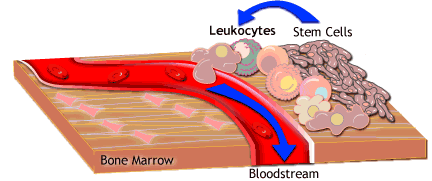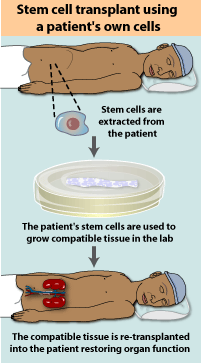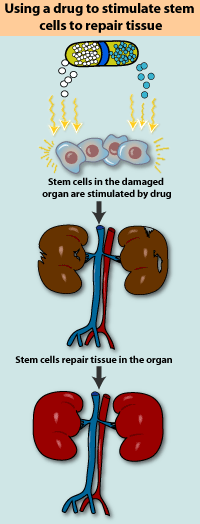

Human Condition
How does stem cell research affect the human condition?
Quite simply, the entire goal of stem cell research is to improve the human condition. Scientists have been studying stem cells, how they work, what they can do, and how we can use them to possibly cure and treat ailments that countless numbers of people suffer from.
Some of stem cell therapies currently improving the human condition are as follows:
1. Adult Stem Cell transplants using Bone Marrow Stem Cells for certain types of cancer
When patients receive bone marrow transplants, they first undergo chemotherapy and radiation to kill their own bone marrow and abnormal leukocytes. After this is completed, bone marrow stem cells from a matching donor are released into the bloodstream. They will enter the bone marrow where they will produce healthy leukocytes.

2. Adult Stem Cell transplants using Peripheral Blood Stem Cells
These can also be used to treat the same cancers, in the same way as Bone Marrow Stem Cells. The difference between the two lies within how they are collected. Bone Marrow Stem Cells must be extracted from inside the bone, whereas Peripheral Blood Stem Cells can be extracted from donated blood.
3. Umbilical Cord Blood Stem Cell transplants
These, too, can treat the same cancers, in the same way as Bone Marrow Stem Cells. The difference is that they are less prone to rejection, making them more desirable.
Some of the ways scientists believe that stem cell research can improve the human condition in the future are as follows:
1. Stem Cell transplants using the patient's own cells
This can be used to restore damaged tissue within patients' bodies. Adult Stem Cells are extracted from the patient and manipulated to grow new, healthy tissue that is later transplanted back into the patient's body. This would be ideal, because by using the patient's own cells, we could possibly eliminate the chance of rejection.

2. Using drugs to stimulate the repair of cells
Scientists hope to, with continued research, find a way to manipulate stem cells within the body to repair damage. They hope to do this by introducing a drug into the body that stimulates the stem cells to reproduce and replace the damaged tissue. This would be an ideal outcome, because it would eliminate the need for surgery.

Information and graphics found on this page taken from:
"Stem Cell Therapies." Genetic Science Learning Center. 2005. University of Utah. 4 Dec. 2005 <http://gslc.genetics.utah.edu/units/stemcells/scfuture/>.
*This site was created for a Monmouth College honors course*